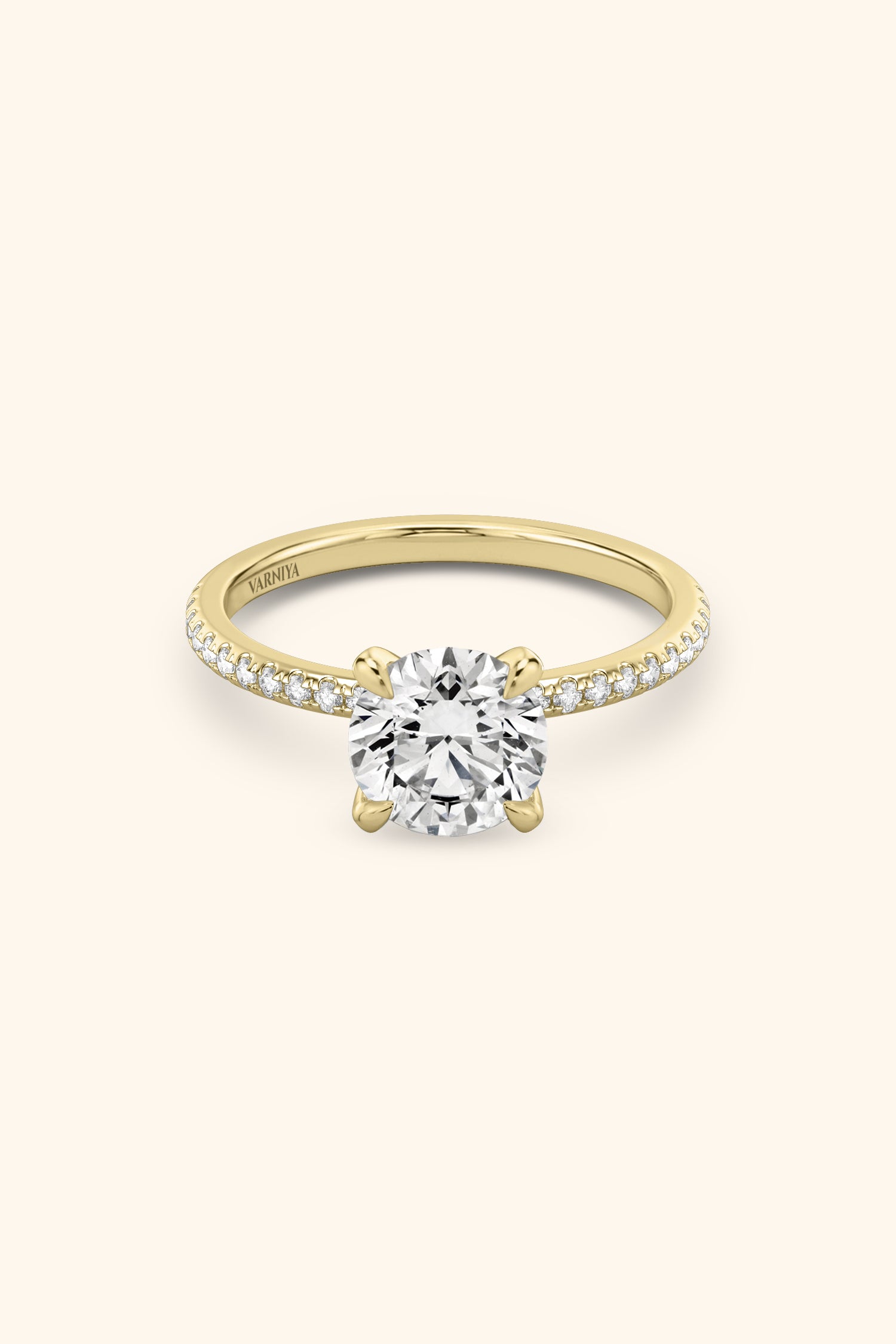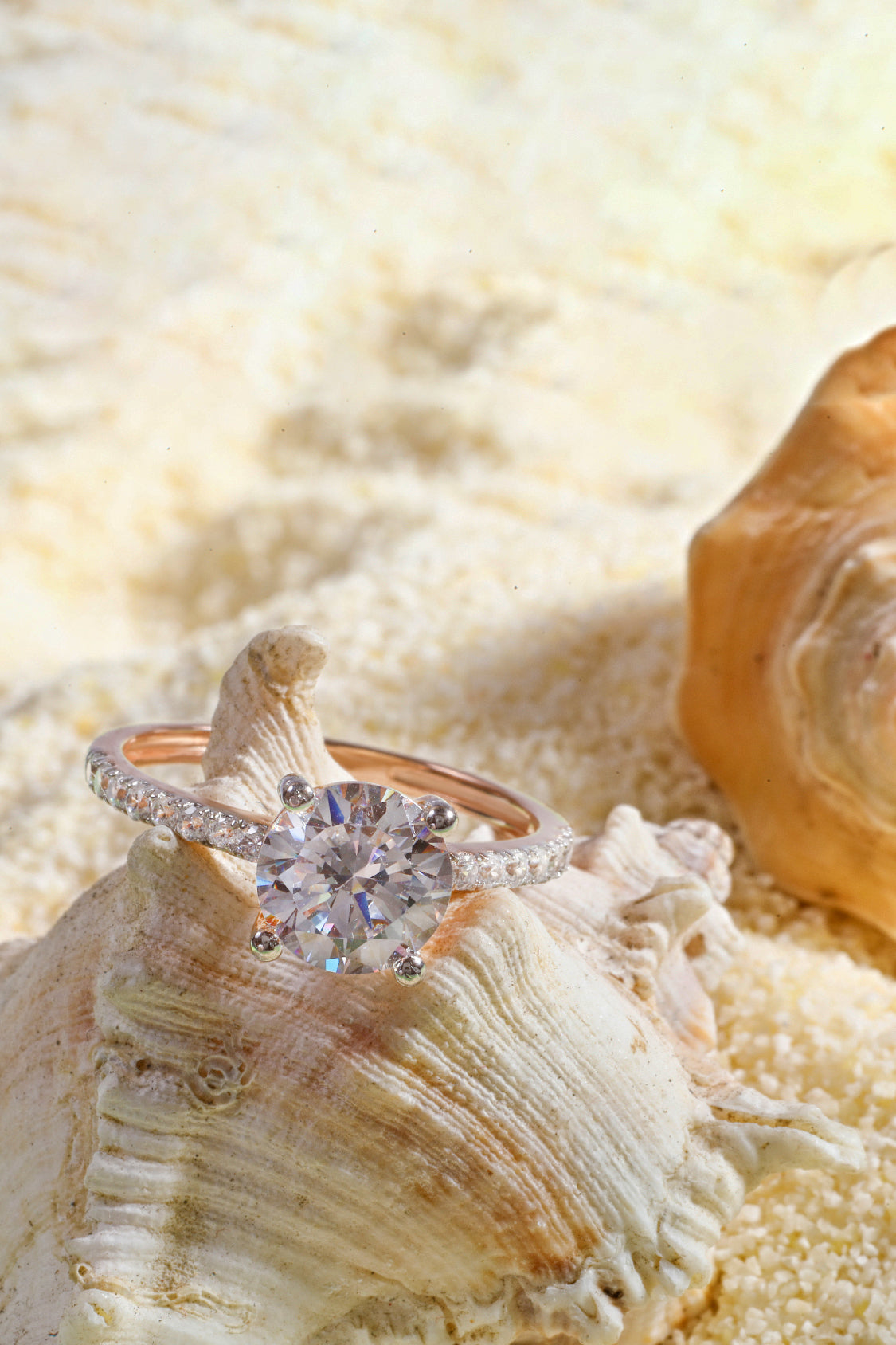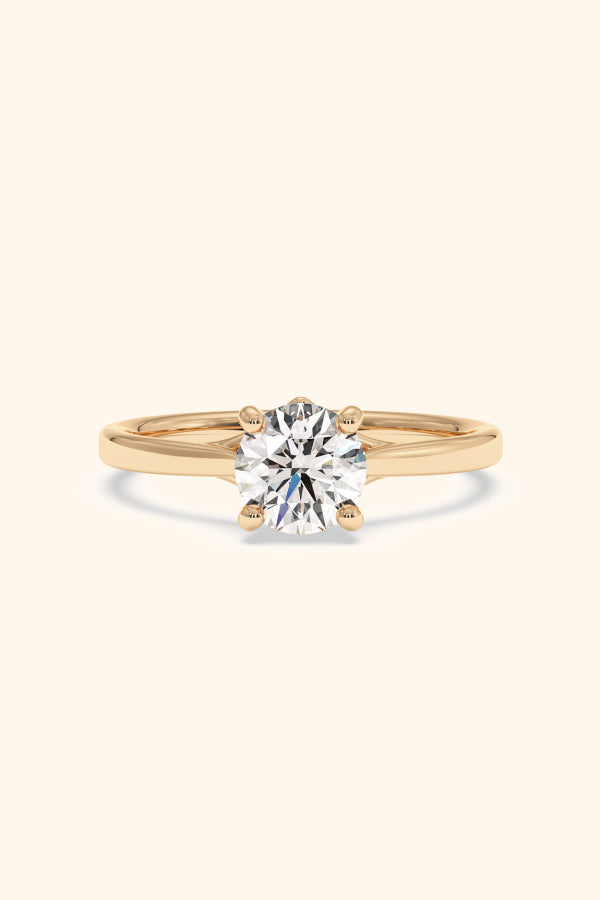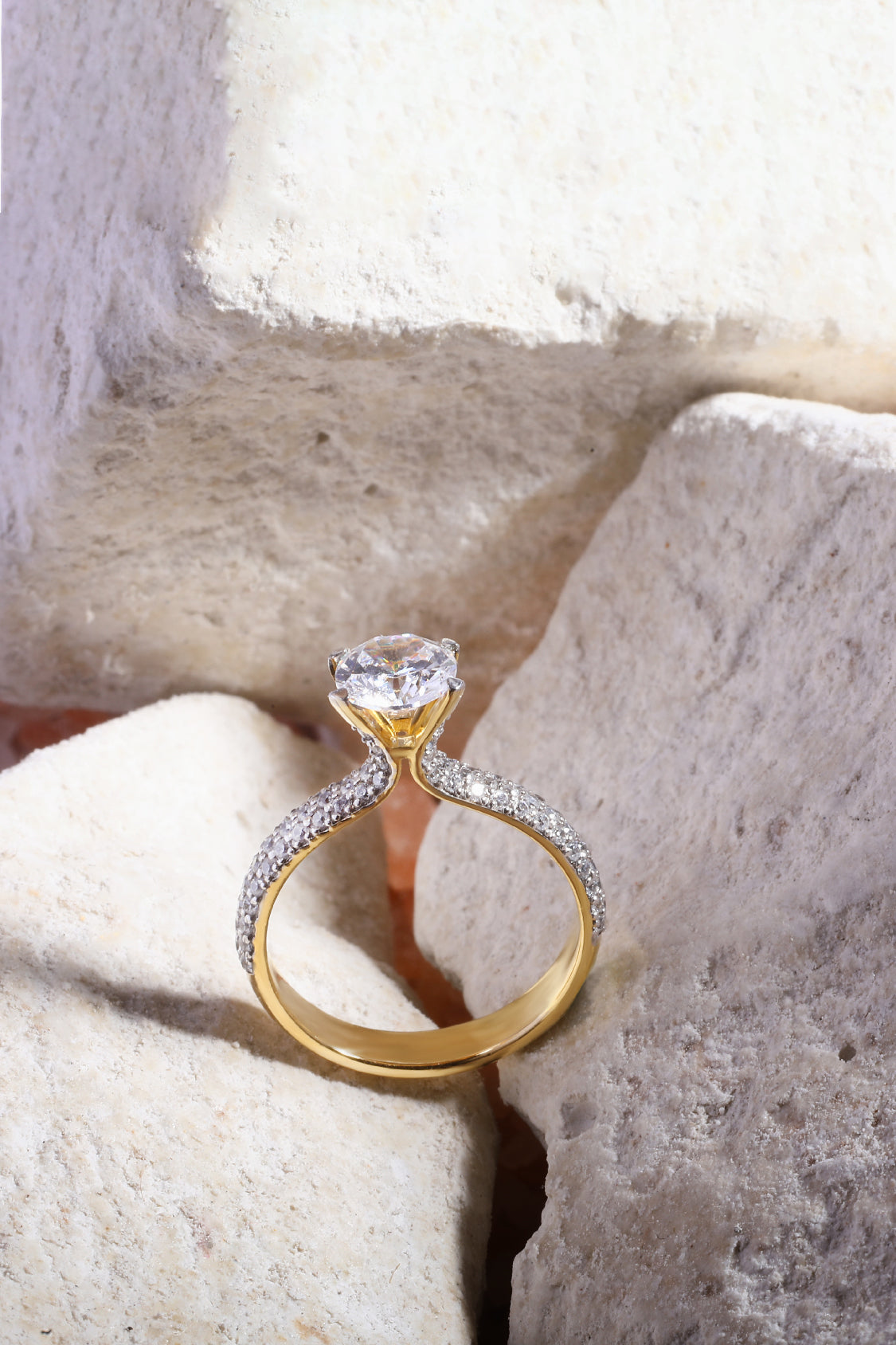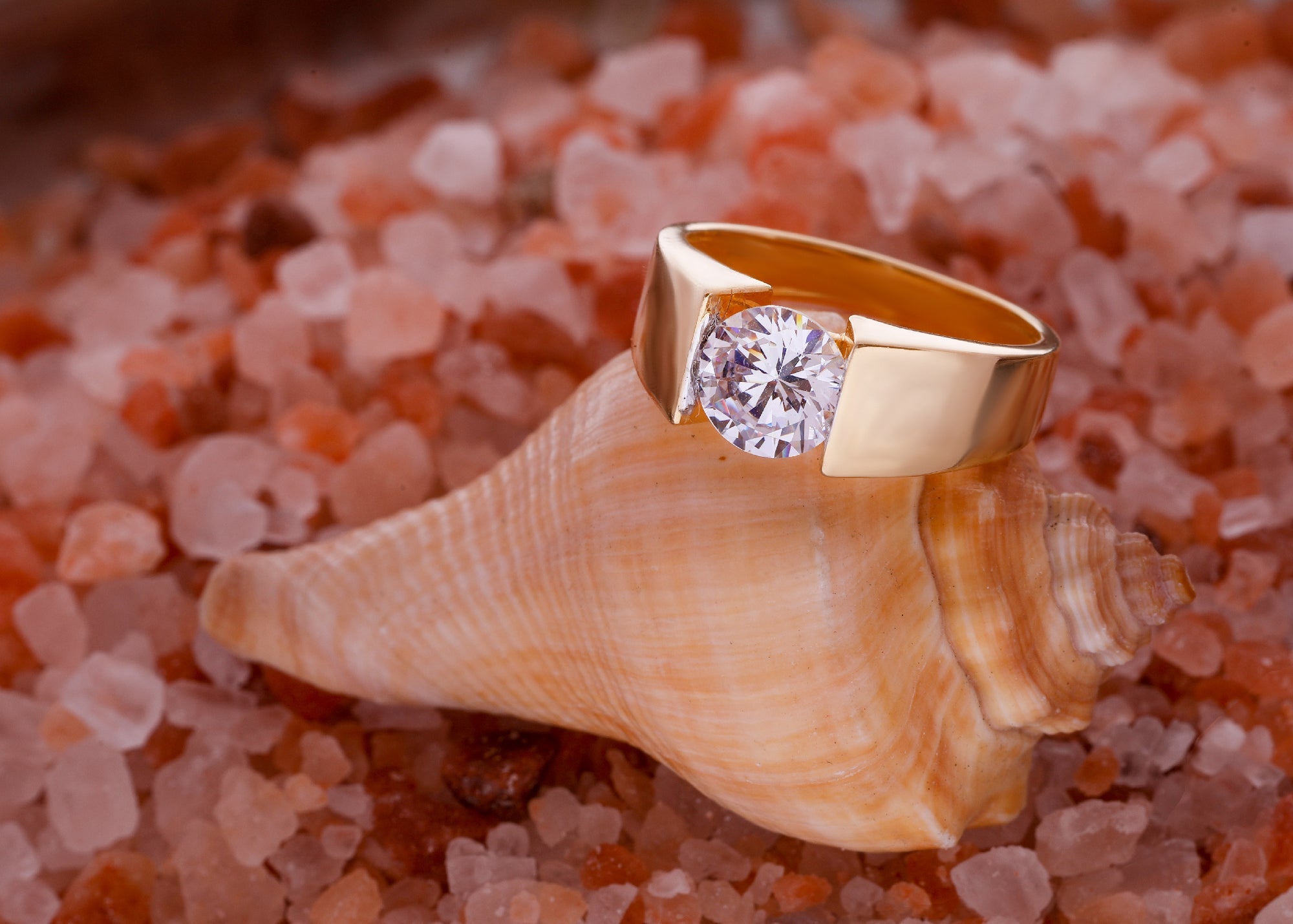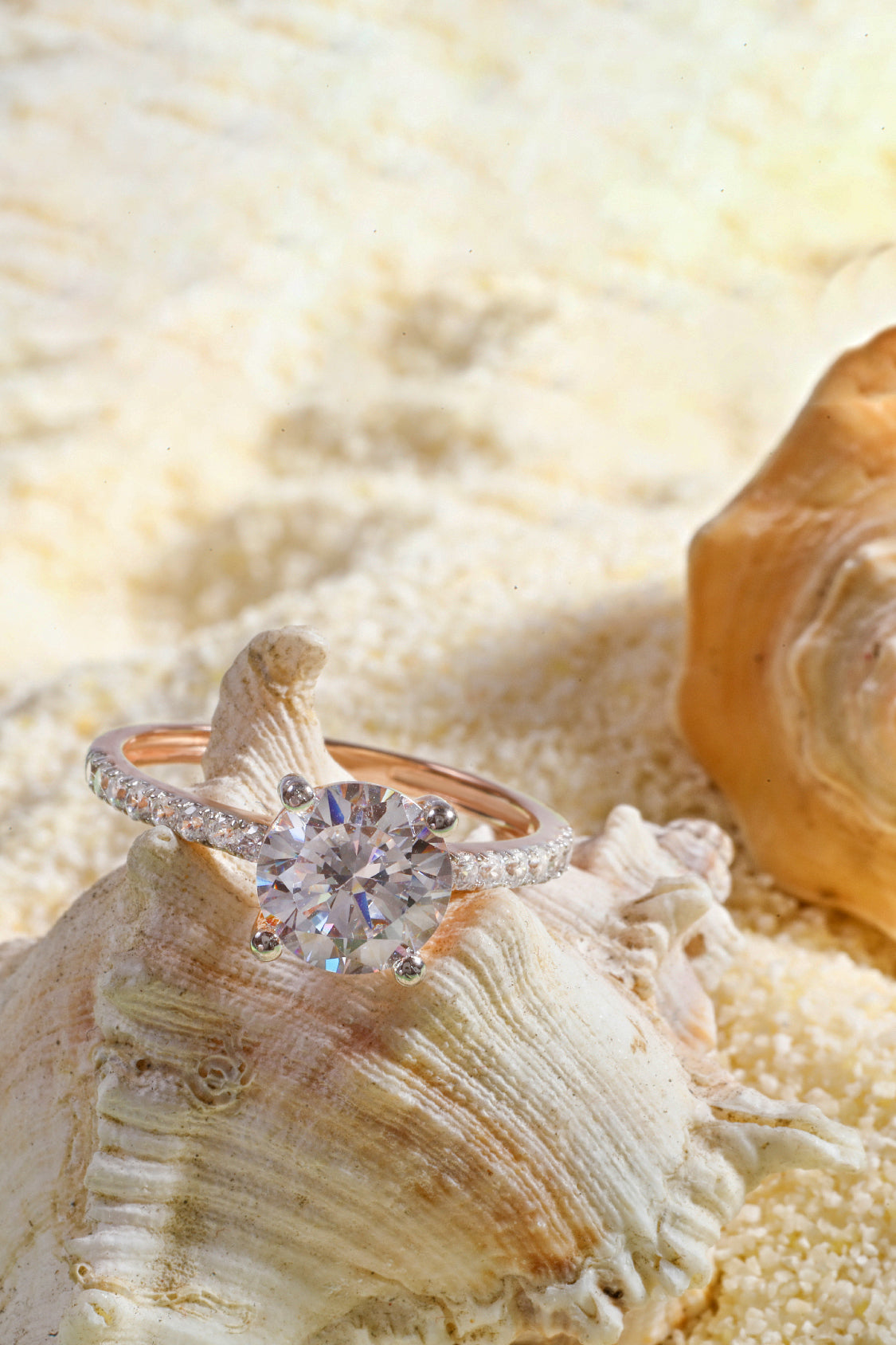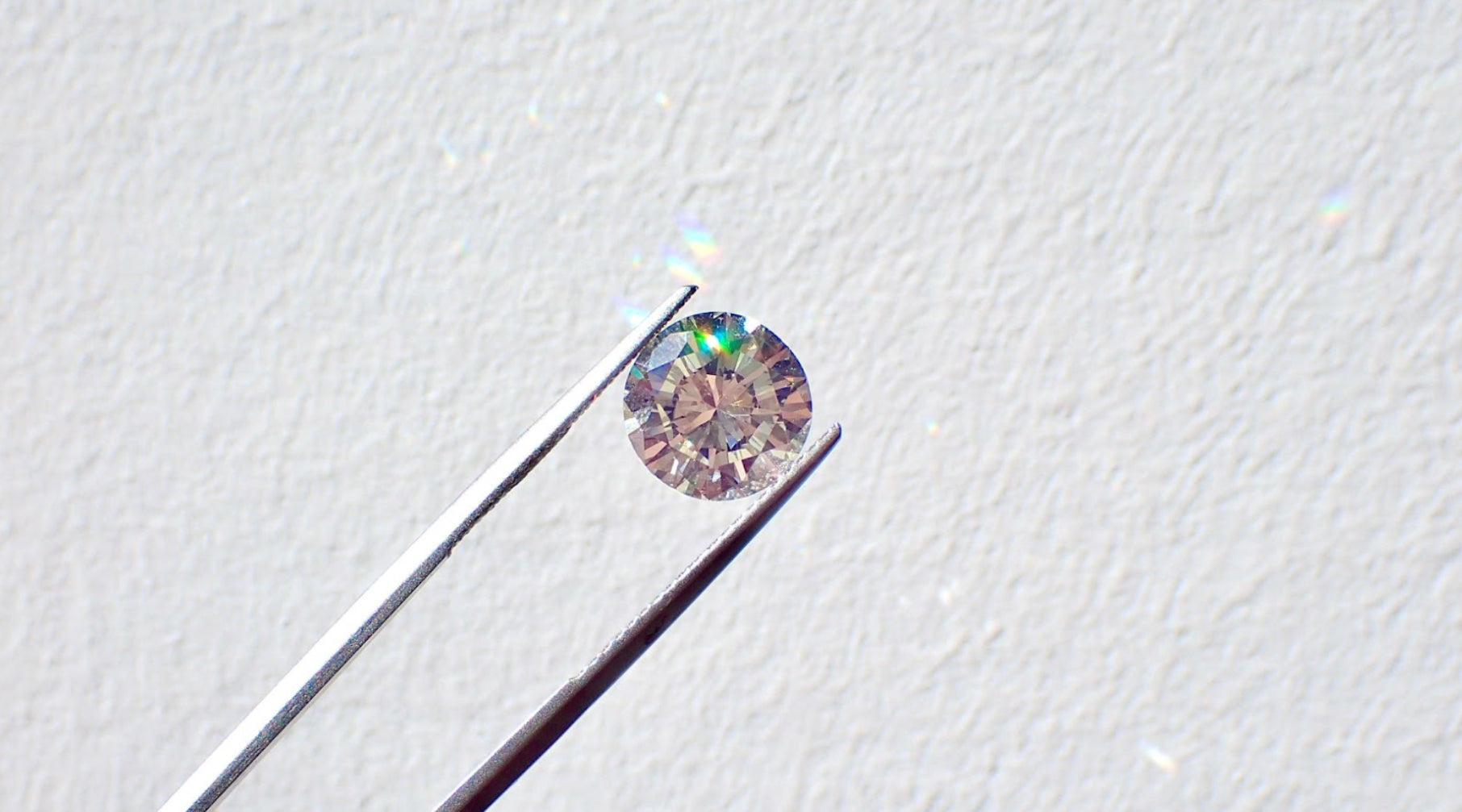
Lab-Grown Diamonds vs. Real Diamonds: Spot the Differences Easily
Lab-Grown diamonds vs. real diamonds —can you tell the difference? Learn how to spot them, compare costs, and decide which is right for you!
So, you're thinking about buying a diamond—but should you go for a lab-grown diamond or a real, mined one? The answer isn’t as simple as “one is fake, and one is real.”
In fact, lab-grown diamonds have the exact same chemical makeup as natural diamonds, and even professional gemologists need special equipment to tell them apart!
And here’s something interesting—lab-grown diamonds can cost 30-40% less than natural diamonds, according to the International Gemological Institute. But does that mean they’re the better choice? That depends on factors like resale value, ethics, and long-term investment.
In this guide, we’ll break it all down—how they’re made, their differences, and how to choose the right one for you.
What are Lab Created Diamonds?
Diamonds are special. They sparkle, last forever, and are often used in engagement rings. But did you know not all diamonds come from the ground? Lab created diamonds are made in a controlled laboratory environment, yet they look and feel just like natural diamonds.
Many people wonder: Are lab grown diamonds real? Yes! They have the exact same chemical makeup as mined diamonds. Even experts need special tools to tell them apart.
So, how do they compare to real diamonds, and why do people choose them?
Find your perfect diamond at Varniya. Browse our exquisite collection of lab-grown and natural diamonds today!
How Do They Compare to Natural Diamonds?
Lab grown diamonds and natural stones have the same fire, sparkle, and hardness. But there are a few key differences:
-
1. How They Are Made
-
Natural diamonds are formed over millions of years, enduring intense heat and extreme pressure deep within the Earth’s mantle.
-
Lab grown diamonds are created using two methods:
-
Chemical Vapor Deposition (CVD): Uses a carbon-rich gas to form a diamond layer by layer.
-
High-Pressure High-Temperature (HPHT): Mimics natural conditions by applying high temperature and intense pressure to grow a diamond.
-
2. Cost and Availability
-
Lab diamonds can be 30-40% cheaper than mined diamonds because they do not involve diamond mining or complex supply chains.
-
They are more sustainable and have a lower impact on the environment.
-
3. Certification and Testing
-
Both types are graded on carat weight, clarity grades, and optical properties by organizations like the Gemological Institute of America (GIA) and the International Gemological Institute (IGI).
-
To tell them apart, experts use a lab created diamonds test, since they are optically identical to natural ones.
💡 Still not sure which diamond is right for you? Let Varniya’s expert gemologists help! Get personalized guidance today.
Natural Stones: What Makes Them Unique?
If lab grown diamonds are so similar to real diamonds, why do some people prefer natural diamonds?
-
Tradition & Symbolism – Natural diamonds are a part of history, passed down through generations. Many buyers see them as a symbol of inherent value.
-
Resale Value – Natural diamonds usually hold their value better over time, while lab grown diamonds offer affordability but lower resale value.
-
Rarity – Since they are formed through a natural process, each mined diamond is one of a kind.
How Lab Diamonds are Made
1. Two Advanced Methods Create Lab Diamonds
Lab-grown diamonds are made using two processes:
-
High-Pressure High-Temperature (HPHT)
-
Chemical Vapor Deposition (CVD)
Both methods result in diamonds with the same chemical properties as those formed naturally. The main difference? Time! Nature takes millions of years, while labs take just a few weeks.
2. HPHT Diamonds
HPHT stands for High-Pressure High-Temperature. It was the first method used to create man-made diamonds and is still widely used today.
How does it work?
-
A small diamond "seed" is placed inside a controlled laboratory environment.
-
The machine applies extreme pressure and intense heat, just like in diamond mining.
-
This causes carbon-rich gas to form around the seed, slowly creating a lab grown diamond.
Fun Fact: HPHT diamonds are often used in industrial tools because they are very strong. But today, they are also used in jewelry and engagement rings.
3. CVD Diamonds
CVD stands for Chemical Vapor Deposition. This method is newer and is used to create most lab grown diamonds today.
How does it work?
-
A tiny diamond seed is placed inside a vacuum chamber.
-
A special carbon-rich gas is added.
-
The gas breaks down, and pure carbon atoms stick to the seed, making it grow into a diamond.
Why do people choose CVD diamonds?
-
They can be made larger and with better clarity grades than HPHT diamonds.
-
The process gives them fewer imperfections, making them look more like natural stones.
-
Many diamond engagement rings today use CVD diamonds because they are high quality.
4. Time Required to Grow a Lab Diamond
It takes millions of years for natural diamonds to form inside the Earth’s mantle. But scientists can grow diamonds in a lab in just a few weeks!
Here’s how long each method takes:
-
HPHT Diamonds (High-Pressure High-Temperature): About 7-10 days for a 1-carat stone.
-
CVD Diamonds (Chemical Vapor Deposition): 2-4 weeks, depending on size.
5. Cutting and Polishing: Just Like Natural Diamonds
Once a lab-created diamond reaches its full size, it is cut and polished, just like a natural one.
Step-by-Step Process:
-
Planning: Experts analyze the diamond’s clarity grades, carat weight, and shape to decide the best way to cut it.
-
Cutting: The diamond is cut using lasers or other precision tools.
-
Polishing: Each facet is carefully polished to maximize the stone’s sparkle.
-
Final Grading: The diamond is sent to a gemological institute like the International Gemological Institute (IGI) or the Gemological Institute of America (GIA) for grading and diamond certification.
Physical and Optical Properties Compared(Lab Grown Diamonds Vs Natural Diamonds)
| Property | Lab-Grown Diamonds | Natural Diamonds |
|---|---|---|
| Chemical Composition | Pure carbon (same as natural diamonds) | Pure carbon |
| Crystal Structure | Identical to natural diamonds | Cubic crystal structure |
| Hardness (Mohs Scale) | 10 (Same as natural diamonds) | 10 (Hardest natural substance) |
| Density | 3.52 g/cm³ (same as natural) | 3.52 g/cm³ |
| Refractive Index | 2.42 (same as natural) | 2.42 |
| Fire & Brilliance | Same fire and sparkle as natural diamonds | High fire and brilliance |
| Fluorescence | May show slight variations under UV light | May show fluorescence under UV light |
| Inclusions & Imperfections | Typically fewer or different from natural diamonds | Unique natural inclusions |
| Formation Process | Created in a lab using HPHT or CVD | Formed over millions of years under high pressure and extreme heat in Earth's mantle |
| Production Time | A few weeks to months | Millions to billions of years |
| Sourcing | Ethical & sustainable, no mining involved | Extracted through diamond mining |
| Cost | 30-40% cheaper than natural diamonds | More expensive due to rarity & mining costs |
| Resale Value | Lower resale value than natural diamonds | Higher resale value due to traditional demand |
| Certification | Certified by IGI, GIA, AGS | Certified by GIA, IGI, AGS |
How to Choose Between Lab-Grown and Natural Diamonds
1. Consider Your Budget
Diamonds can be expensive. The price depends on carat weight, clarity grades, and how they are created.
-
Lab-grown diamonds are 30-40% cheaper than natural diamonds.
-
The diamond industry prices mined diamonds higher due to their rarity and demand.
-
A 1-carat lab-grown diamond costs around $1,500-$3,000, while a natural diamond of the same size can cost $4,000 or more.
💰 Want luxury without the hefty price tag? Varniya’s lab-grown diamonds offer unmatched beauty, affordability, and sustainability.
2. Think About Long-Term Value
Many people ask: Do lab-grown diamonds offer the same resale value as natural diamonds?
-
Natural diamonds tend to hold their inherent value better over time.
-
Lab-created diamonds may lose value faster because their production is increasing.
-
According to the International Gemological Institute, natural diamonds are often seen as an investment, while man-made diamonds are chosen for beauty and affordability.
3. Decide on Ethical and Environmental Impact
The diamond market has changed. Many buyers today think about how diamonds are sourced.
Are Lab-Grown Diamonds More Ethical?
-
Natural diamonds are mined, which can harm the earth’s mantle and use a lot of energy.
-
Lab-grown diamonds don’t require diamond mining, making them an ethical alternative.
-
Federal Trade Commission guidelines now recognize lab-created diamonds as real diamonds.
Environmental Impact
-
Diamond mining uses heavy machines, creating high pressure and extreme pressure on the environment.
-
Lab-grown stones are made using high temperature and carbon-rich gas, but with a smaller carbon footprint.
4. Consider Symbolism and Tradition
Diamonds have been a symbol of love and commitment for centuries. Many people believe that natural diamonds hold a deep, historical meaning. But does this mean that lab-grown diamonds are any less special?
Why Some Prefer Natural Diamonds
-
They are rare and formed over millions of years in the Earth’s mantle.
-
Some believe that natural diamonds have inherent value because they are unique.
-
The tradition of diamond engagement rings has existed for centuries, making them a timeless choice.
Why Lab-Grown Diamonds Are a New Tradition
-
Lab-grown diamonds offer the same optical properties and chemical makeup as natural diamonds.
-
The Federal Trade Commission (FTC) recognizes them as real diamonds.
-
They are an ethical alternative, reducing the need for diamond mining.
5. Look at Quality and Appearance
Can you tell the difference between a lab-grown diamond and a real diamond just by looking at them? Probably not!
How Are They Similar?
-
Both have the same fire, sparkle, and brilliance.
-
Both can have flawless clarity grades and excellent carat weight.
-
Both are cut and polished using the same high-temperature process.
6. Choose Based on Personal Preferences
At the end of the day, the best diamond is the one you love the most. Here are a few things to think about:
-
1. Do You Want an Ethical Choice?
If you care about the environment and supply chains, choosing lab-grown diamonds is a great option. They require less energy and don’t involve diamond mining. -
2. Do You Want a Diamond That Holds Value?
If resale value matters, natural diamonds may be a better investment. While lab-grown diamonds offer affordability, they don’t always hold the same long-term value as natural counterparts. -
3. Do You Care About the Rarity?
Natural diamonds take millions of years to form, making them truly one of a kind. Lab-created diamonds are grown in weeks, making them easier to find in exact sizes and cuts.
Resale Value: Do Man Made Diamonds Hold Their Worth?
When buying a diamond, you might wonder: Will I get my money back if I sell it later?
Do Lab-Grown Diamonds Have Resale Value?
The short answer is yes, but not as much as natural diamonds.
-
Natural diamonds often hold their value because they are rare and have been in demand for centuries.
-
Lab-grown diamonds are made in a controlled laboratory environment, which means they are easier to produce and not as rare.
A natural diamond engagement ring may resell at 50-70% of its original price, while a lab-grown diamond ring may resell at a lower percentage.
Why Do Natural Diamonds Hold More Value?
-
They are formed over millions of years in the earth’s mantle.
-
They are part of a historical market controlled by major gemological institutes and jewelers.
-
Diamond mining is expensive, which adds to their high resale value.
If you’re buying a diamond engagement ring for sentimental reasons, resale value may not be your top concern. If you’re thinking of diamonds as an investment, natural stones are usually the better choice.
How the Jewellery Industry and Gemological Institutes Certify These Diamonds
When buying a diamond, you want to be sure it’s real and of high quality. That’s why gemological institutes and the jewellery industry use strict certification standards for both lab-grown diamonds and natural diamonds.
Who Certifies These Diamonds?
Trusted organizations like the Gemological Institute of America (GIA) and the International Gemological Institute (IGI) provide certificates for diamonds. These certificates confirm:
-
Carat weight
-
Clarity grades
-
Chemical makeup
-
Optical properties
Synthetic Diamonds: Myths vs. Facts
-
Synthetic diamonds are often confused with lab-grown diamonds, but they are not always the same.
-
The term "synthetic" is used for any diamond created through artificial processes, but these can include simulants like cubic zirconia and moissanite, which lack the carbon structure of real diamonds.
-
True synthetic diamonds, like lab-grown diamonds, have the same chemical, physical, and optical properties as natural ones.
-
Myth #1: Synthetic Diamonds Are Fake
Fact: Synthetic diamonds are real diamonds. -
They have the same chemical makeup, same fire, and same sparkle as mined diamonds.
-
They are created in a controlled laboratory environment, using high pressure and high temperature, just like nature does over millions of years.
-
Gemological institutes, like the Gemological Institute of America (GIA) and the International Gemological Institute (IGI), certify them just like natural diamonds.
-
Myth #2: Synthetic Diamonds Are Cheap and Low Quality
Fact: Synthetic diamonds are high-quality gemstones. -
They are graded using the same diamond certification process as natural diamonds.
-
The clarity grades, carat weight, and optical properties match those of mined diamonds.
-
Many jewelers in the jewellery industry now prefer synthetic diamonds due to their ethical alternatives and environmental benefits.
-
Myth #3: Synthetic Diamonds Have No Value
Fact: Synthetic diamonds hold value but differently than natural diamonds. -
Mined diamonds have been part of the diamond market for centuries, making them hold inherent value.
-
Lab-grown diamonds cost less upfront but don’t have the same resale value as natural stones.
-
Choosing lab-grown diamonds is a cost-effective and ethical choice if you want a beautiful stone without spending too much.
-
Myth #4: You Can’t Tell the Difference
Fact: Even experts need special tools to distinguish synthetic from natural diamonds. -
Synthetic diamonds have the exact same chemical makeup and same quality as mined diamonds.
-
CVD diamonds and HPHT diamonds are two types of lab-created diamonds that mimic nature’s process.
Choosing between lab-grown diamonds vs. real diamonds depends on your priorities. If you value tradition, rarity, and resale value, natural diamonds are the better choice. If you prefer affordability, ethical sourcing, and sustainability, lab-grown diamonds offer a modern alternative. Both are real diamonds with the same chemical makeup and optical properties. The decision is yours—what matters most to you? 💎
💍 Ready to find your perfect diamond? Whether it’s a classic natural diamond or a stunning lab-grown gem, Varniya has the one for you.


